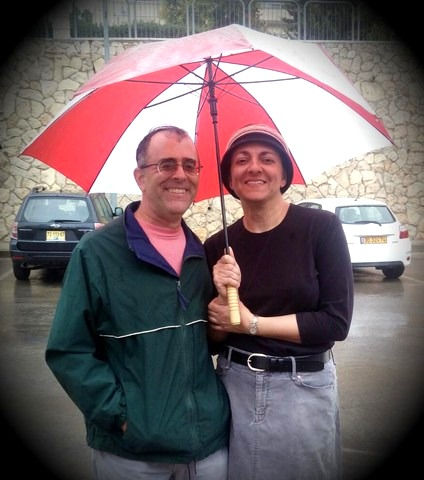WEATHER: Reaching For The Moon
- Dr. Barry Lynn
- Apr 16, 2019
- 3 min read
![Full Scale Model Of Beresheet Moon Probe (Israel Aerospace Industries and SpaceIL) by TaBaZzz - Own work [CC BY-SA 4.0] via Wikimedia](https://static.wixstatic.com/media/599529_26d0f01a71584a6bbd74f93ef9638390~mv2.jpg/v1/fill/w_980,h_684,al_c,q_85,usm_0.66_1.00_0.01,enc_avif,quality_auto/599529_26d0f01a71584a6bbd74f93ef9638390~mv2.jpg)
Full Scale Model Of Beresheet Moon Probe (Israel Aerospace Industries and SpaceIL) by TaBaZzz - Own work [CC BY-SA 4.0] via Wikimedia
The weather last Shabbat was certainly beautifully sunny. The nice weather goes perfectly with the bursting out of cherry blossoms. The nice weather is courtesy of high pressure over the eastern Mediterranean, and warm southwesterly winds. I wouldn't be surprised if folks assume that our winter/spring rains are a thing of the past (last winter's past, to be exact).

However, they just might be mistaken.
Despite our beautiful and warm weather on Shabbat, our high pressure system gave way on Monday to a trough of low pressure dropping down from eastern Europe. This ended our short string of warm days and brought showers soon after. A very slow moving (nearly cutoff) low pressure area will meanwhile establish itself in the eastern Atlantic as we move into mid-week.
Then an unusual situation should develop. Normally, warmer temperatures over Greenland — as indicated by a negative North Atlantic Oscillation (NAO) pattern — leads to warmer weather here as a ridge of high pressure builds in the eastern Mediterranean.
However, as the cutoff low over the eastern Atlantic intensifies, it will instead help to build a very strongly amplified ridge of warm air over Great Britain and far northern Europe. The developing wind pattern should then favor an influx of cold air from the western regions of Siberia, which should deepen the trough in the eastern Mediterranean as the week progresses (with showers continuing) and possibly spin up a more potent storm as we turn the corner next week into Pesach.
It's all very complicated, but it does look like the latter part of Pesach should be more conducive for outdoor activities. Of course, we have the advantage of looking at multiple forecasts over time, and if in the end it looks like the early Pesach storm will miss us, we can always change our forecast.
Not so those who sent the Israeli spaceship Bereshit (named after the first book of the Torah) on its ill-fated mission to the lunar surface. I have to admit, though, that I was one of the very excited ones watching the lunar landing. I entertained the idea that not only would we be the fourth country to land on the moon, but we would be the first country to discover the little green men (with antennae) that eat the green cheese we all believe the moon to be made of.
I even thought that perhaps we would find out that it is instead made of a white cheese and olive mix, and that all my wife and I would need to do on our next vacation would be to bring the bread to eat it on (or at least my wife — I prefer oatmeal).
But, it was not to be. There's really nowhere engineers can practice those lunar landings except on the moon — and then it's not practice. True, computers can be used to test out different scenarios and to model spaceship behavior during the landing. But, we don't need a computer to tell us that if the main engine fails on the way down it won't be a good ending. It's sort of like a child that rides his/her bicycle down the stairs — it's a great ride until it ends (but that’s another story).
As you know Israelis are not very good at long term planning. As my nephew wrote: "It's really fits the Israeli personality to drive 900 km/h to the moon and to say, ‘Walla (oops)! I didn't pay attention, there's a moon in my way.’ But, the main thing is that we arrived."
Regardless, new plans are being made and some are calling the new moon-lander Vayikra (the third book of the Torah).
Image credit: The Jerusalem Herald
Dr. Lynn is a lecturer at The Hebrew University of Jerusalem, Earth Sciences Department. He is also CEO of Weather It Is, LTD, a company that specializes in reducing weather risk. Click here to read more of this writer’s work in The Jerusalem Herald





































Comments